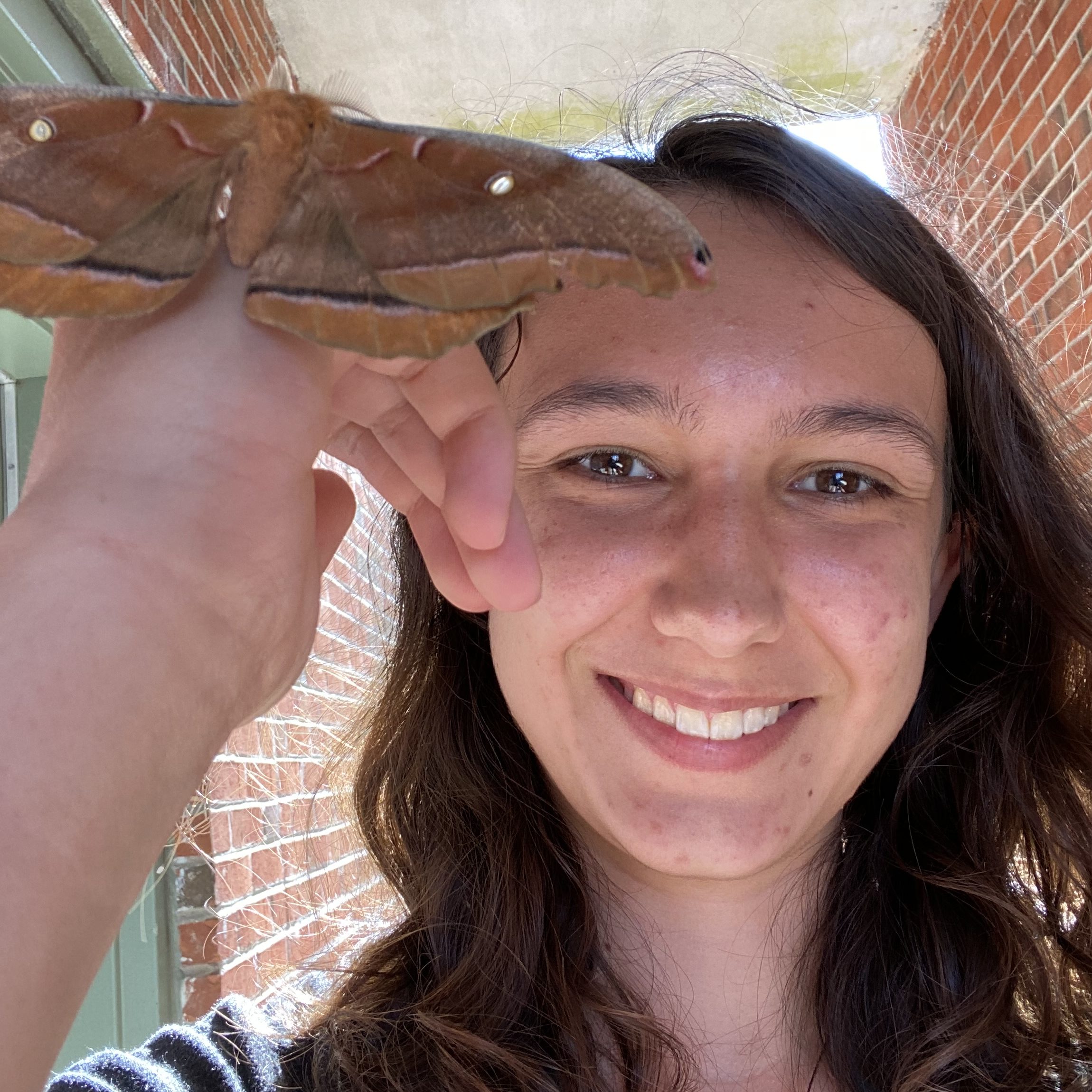
I only saw hummingbird moths for the first time this past semester. Also known as sphinx moths or hawk moths, I would often find one or two elegant members of the Sphingidae family resting by my porchlight on warm nights. One particularly weird interaction, however, was when my friend and I were climbing the stairs to our suite one evening and saw the largest moth we’d ever seen appear out of nowhere. It flew in under one of the landings and started bumping its head against the ceiling in a manner that made it look like it was hopping upside down. My friend isn’t exactly fond of moths and took off up the stairs, but I ran back down to take some pictures of the funny-looking thing for this post – as per usual, however, they all turned out blurry. Looks like National Geographic won’t be calling me anytime soon. And I never did find out what exactly that moth was trying to accomplish by repeatedly bumping its head on the ceiling.
Despite that, um, interesting encounter, hummingbird moths are absolutely adorable. Even if you’ve never seen one before, whatever you’re picturing in your head is probably pretty accurate – they look just like hummingbirds when they’re flying, especially from a distance. Up close you could tell that they have moth faces, but their bodies, wings, humming sound and often coloration resemble those of hummingbirds. They’re also fast like their namesake and can fly at speeds of up to 12mph thanks to their large wingspan, which can be up to six inches long. Much like how hummingbirds use their beaks, hummingbird moths can hover over flowers while they extend their long tongues to drink the flowers’ nectar. These moths tend to be most active in the summer, when most of their preferred flowers are in bloom, and unlike most other moths are actually diurnal.
Hummingbird moth larvae, called hornworms, are actually responsible for the “sphinx moth” nickname, as their resting posture resembles that of the sphinx statues. However, they’re often referred to as hornworms because of the little horn on their backside. Hornworms are fond of honeysuckle, beebalm and similar plants, which may also be frequented by the adults, but some species also enjoy a good tomato plant, earning them a bad reputation amongst gardeners. Instead of spinning their cocoons from a hanging position like most lepidopterans, hornworms actually make their cocoons on the ground hidden in leaf debris. Some will just burrow into the leaves and won’t bother forming a cocoon at all!
While adults moths are often camouflaged or resemble birds and stinging insects to avoid being eaten, hummingbird moth larvae have a few other tricks up their sleeves. Like luna moth larvae, hornworms may throw up to ward off predators, but some species can actually hiss to scare their attackers way. One such species, the walnut sphinx, accomplishes this feat by blowing air through its spiracles, or the little holes on its abdomen through which it breathes. This is basically the equivalent of aggressively whistling through your nostrils.
Well, if it works it works. It may be weird, but it keeps hornworms from being eaten, and that’s what counts when you’re a tasty little arthropod. Actually, there are hornworms that just avoid the tasty thing altogether and don’t have to worry about weird breathing exercises: some hornworms feed off of nightshade plants, which contain toxins that make the larvae taste bad. I guess a few caterpillars had to take one for the team for that strategy to work, though, so maybe the funny nostril thing isn’t so ridiculous after all.
While you’re not likely to find them south of the equator, hummingbird moths can be found throughout parts of North America, Europe, Africa and Asia. They’re still not the most common insects, however, so keep your eyes peeled – and be sure to careful scrutinize your hummingbird feeder for imposters.
…That said, I can’t believe the number of sphinx moths I saw this fall alone when I still haven’t seen a single luna moth. Is it really too much to ask to see just one pie fairy? Good grief. If anyone knows a good spot in North Carolina for luna moth sightings, please let me know.
